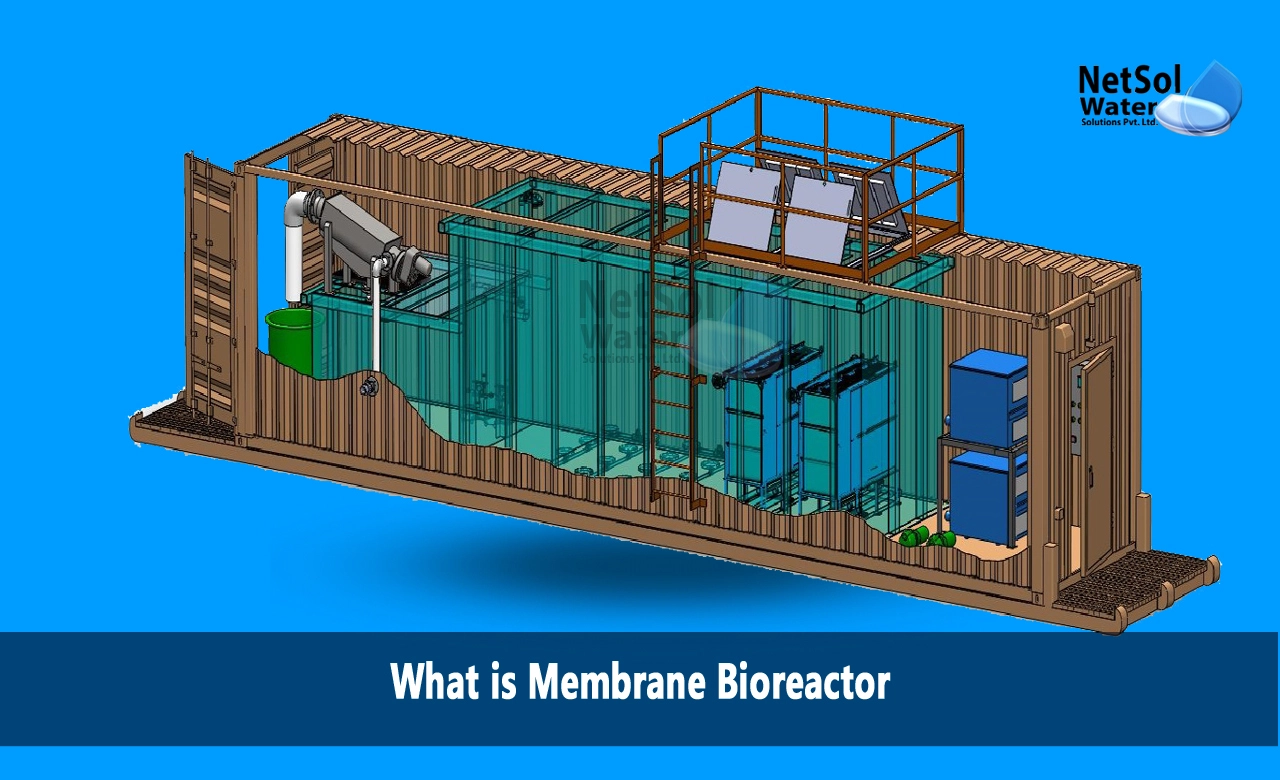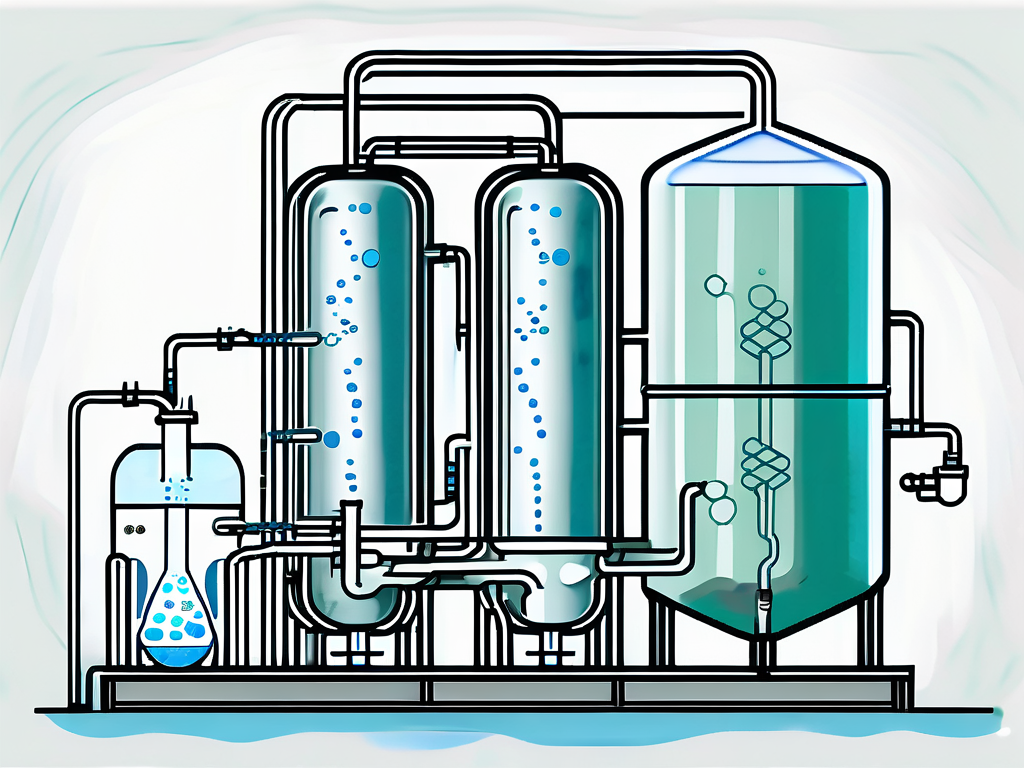Exploring the Benefits of Membrane Bioreactor in Municipal Wastewater Plants
Exploring the Benefits of Membrane Bioreactor in Municipal Wastewater Plants
Blog Article
Recognizing Membrane Layer Bioreactors: The Future of Wastewater Treatment
Membrane bioreactors (MBRs) stand for a notable development in the field of wastewater therapy, integrating organic processes with advanced membrane layer filtration to enhance effluent high quality. As worldwide water scarcity and stringent regulative frameworks end up being progressively pressing issues, MBR innovation uses a reliable reaction with its ability to reduce footprint and maximize resource recuperation.
What Are Membrane Bioreactors?

The core elements of MBR systems consist of a bioreactor where microbial activity takes place and a membrane unit that filters the combined alcohol. This double capability enables the simultaneous degradation of raw material and solid-liquid splitting up in a single step. MBRs can operate in both immersed and external setups, with submerged systems being more common because of their small style and functional efficiency.
The adoption of MBR modern technology has actually gotten traction in numerous applications, ranging from local wastewater treatment to commercial effluent administration. MBRs are especially helpful in situations where room is limited or strict effluent quality requirements have to be met. By keeping a high focus of microorganisms within the bioreactor, MBRs enhance the destruction of natural pollutants, consequently generating greater treatment effectiveness contrasted to standard methods.
Key Advantages of MBR Innovation
The combination of biological therapy with membrane layer filtering in MBR systems supplies many benefits that establish it aside from conventional wastewater therapy methods. One of the primary advantages is the boosted effluent top quality. MBRs successfully get rid of suspended pathogens and solids, achieving greater degrees of filtration that meet strict discharge criteria and assist in water reuse applications.

An additional substantial advantage is the lowered sludge production. MBR systems generate much less excess sludge, resulting in lower disposal expenses and a decline in ecological influence. The shut nature of the membrane layer system decreases the threat of smell emissions and enhances general procedure control.
Last But Not Least, MBRs are adaptable and flexible, making them appropriate for numerous wastewater kinds, consisting of industrial and metropolitan resources. The capability to incorporate with innovative therapy technologies even more boosts their performance, making MBRs an encouraging option for the future of wastewater monitoring.
Difficulties and Limitations of MBRs
While MBR modern technology supplies numerous advantages, it also encounters a number of challenges and constraints that can affect its extensive fostering. One considerable difficulty is the high funding and functional costs associated with MBR systems. The preliminary financial investment for membrane layer materials and the required facilities can be substantial, making it much less obtainable for smaller sized communities or markets.
In addition, membrane fouling remains an important issue that can decrease system efficiency and rise maintenance demands. Fouling happens when solids, raw material, or microbes accumulate on the membrane surface, leading to reduced leaks in the structure and needing regular cleaning or substitute.
An additional restriction entails the intricacy of the technology. MBR systems call for proficient personnel for procedure and maintenance, which can be a barrier in regions with limited technological competence. The disposal of spent membrane layers provides ecological concerns, as the products are commonly not biodegradable and can contribute to throw away management difficulties.
Last But Not Least, while MBRs can effectively deal with a variety of wastewater, they may not be ideal for all applications, specifically those with high focus of fats, oils, and greases, necessitating further study and development to address these limitations.
Applications of Membrane Bioreactors
In different markets, membrane bioreactors (MBRs) have actually emerged as a functional solution for wastewater therapy (Membrane Bioreactor). Their applications cover local, commercial, and farming settings, showcasing their adaptability and efficiency in diverse atmospheres. In community wastewater treatment plants, MBRs considerably improve effluent top quality, enabling water reuse and lowering the environmental impact of discharged wastewater
Industrially, MBRs are utilized in food and beverage handling, textile production, and pharmaceutical production, where they successfully deal with high-strength waste streams. Their capacity to manage varying and rising and fall tons impurity focus makes them specifically beneficial in these industries. Additionally, MBRs facilitate the elimination of pathogens, put on hold solids, and raw material, adding to compliance with rigid discharge policies.
In farming, MBRs are progressively made use of for dealing with agricultural drainage and livestock wastewater, making it possible for the healing of nutrients for plant food manufacturing. They also aid in the treatment of greywater for irrigation, promoting lasting water management methods.
The flexibility of MBRs is more evidenced by their combination with various other modern technologies, such as anaerobic digestion and progressed oxidation processes, boosting overall performance and resource recovery in wastewater therapy systems.
The Future of Wastewater Treatment
Innovations in modern technology and an expanding emphasis on sustainability are forming the future of wastewater therapy. Membrane layer bioreactors (MBRs) exemplify this change by incorporating organic therapy processes with membrane filtration, leading to high-quality effluent appropriate for reuse. The pattern in the direction of round economies is More Bonuses triggering facilities to adopt MBRs for their capability to recover resources, such as water and nutrients, from wastewater.
Advancements in membrane layer products and arrangement are enhancing the effectiveness and longevity of MBR systems, decreasing operational prices and power intake. Smart modern technology integration, including real-time surveillance and automated control systems, is more maximizing performance and allowing predictive maintenance, therefore minimizing downtime.
Furthermore, regulatory stress important site and social assumptions are pushing communities and sectors to embrace more sustainable practices. Membrane Bioreactor. The shift in the direction of decentralized wastewater therapy services is acquiring traction, permitting for localized therapy that lowers transportation costs and power use
Conclusion
Membrane layer bioreactors (MBRs) represent a transformative technique to wastewater therapy, incorporating organic procedures with advanced membrane layer technology. The benefits of MBRs, consisting of improved effluent top quality, lowered spatial needs, and lower sludge manufacturing, position them as a sensible service in the middle of growing urbanization and stricter ecological regulations. Regardless of existing obstacles, the continued advancement in membrane layer products and operational methods promises to reinforce the effectiveness and fostering of MBRs, use this link guaranteeing their pivotal function in the future of lasting wastewater management.
Membrane bioreactors (MBRs) represent a notable innovation in the field of wastewater therapy, incorporating organic processes with sophisticated membrane filtration to enhance effluent top quality.Membrane layer bioreactors (MBRs) incorporate organic treatment processes with membrane layer purification to successfully treat wastewater.The integration of organic therapy with membrane filtration in MBR systems offers countless benefits that set it apart from conventional wastewater treatment methods. Membrane layer bioreactors (MBRs) exhibit this shift by incorporating organic treatment procedures with membrane layer filtration, resulting in top quality effluent suitable for reuse.Membrane layer bioreactors (MBRs) represent a transformative approach to wastewater therapy, integrating organic processes with advanced membrane layer innovation.
Report this page